![黎曼几何和几何分析(第6版) [Riemannian Geometry and Geometric Analysis Sixth Edition]](https://pic.windowsfront.com/11647751/54e1b516N236b44c7.jpg)

具体描述
内容简介
Riemannian geometry is characterized, and research is oriented towards and shaped by concepts (geodesics, connections, curvature, ...) and objectives, in particular to understand certain classes of (compact) Riemannian manifolds defined by curvature conditions (constant or positive or negative curvature, ...). By way of contrast, geometric analysis is a perhaps somewhat less systematic collection of techniques, for solving extremal problems naturally arising in geometry and for investigating and characterizing their solutions. It turns out that the two fields complement each other very well; geometric analysis offers tools for solving difficult problems in geometry, and Riemannian geometry stimulates progress in geometric analysis by setting ambitious goals.It is the aim of this book to be a systematic and comprehensive introduction to Riemannian geometry and a representative introduction to the methods of geometric analysis. It attempts a synthesis of geometric and analytic methods in the study of Riemannian manifolds.
The present work is the sixth edition of my textbook on Riemannian geometry and geometric analysis. It has developed on the basis of several graduate courses I taught at the Ruhr~University Bochum and the University of Leipzig. The main new feature of the present edition is a systematic presentation of the spectrum of the Laplace operator and its relation with the geometry of the underlying Riemannian marufold. Naturally, I have also included several smaller additions and minor corrections (for which I am grateful to several readers). Moreover, the organization of the chapters has been systematically rearranged.
内页插图
目录
1 Riemannian Manifolds1.1 Manifolds and Differentiable Manifolds
1.2 Tangent Spaces
1.3 Submanifolds
1.4 Riemannian Metrics
1.5 Existence of Geodesics on Compact Manifolds
1.6 The Heat Flow and the Existence of Geodesics
1.7 Existence of Geodesics on Complete Manifolds
Exercises for Chapter 1
2 Lie Groups and Vector Bundles
2.1 Vector Bundles
2.2 Integral Curves of Vector Fields.Lie Algebras
2.3 Lie Groups
2.4 Spin Structures
Exercises for Chapter 2
3 The Laplace Operator and Harmonic Differential Forms
3.1 The Laplace Operator on Functions
3.2 The Spectrum of the Laplace Operator
3.3 The Laplace Operator on Forms
3.4 Representing Cohomology Classes by Harmonic Forms
3.5 Generalizations
3.6 The Heat Flow and Harmonic Forms
Exercises for Chapter 3
4 Connections and Curvature
4.1 Connections in Vector Bundles
4.2 Metric Connections.The Yang—Mills Functional
4.3 The Levi—Civita Connection
4.4 Connections for Spin Structures and the Dirac Operator
4.5 The Bochner Method
4.6 Eigenvalue Estimates by the Method of Li—Yau
4.7 The Geometry of Submanifolds
4.8 Minimal Submanifolds
Exercises for Chapter 4
5 Geodesics and Jacobi Fields
5.1 First and second Variation of Arc Length and Energy
5.2 Jacobi Fields
5.3 Conjugate Points and Distance Minimizing Geodesics
5.4 Riemannian Manifolds of Constant Curvature
5.5 The Rauch Comparison Theorems and Other Jacobi Field Estimates
5.6 Geometric Applications of Jacobi Field Estimates
5.7 Approximate Fundamental Solutions and Representation Formulas
5.8 The Geometry of Manifolds of Nonpositive Sectional Curvature
Exercises for Chapter 5
A Short Survey on Curvature and Topology
6 Symmetric Spaces and Kahler Manifolds
6.1 Complex Projective Space
6.2 Kahler Manifolds
6.3 The Geometry of Symmetric Spaces
6.4 Some Results about the Structure of Symmetric Spaces
6.5 The Space Sl(n,IR)/SO(n,IR)
6.6 Symmetric Spaces of Noncompact Type
Exercises for Chapter 6
7 Morse Theory and Floer Homology
7.1 Preliminaries: Aims of Morse Theory
7.2 The Palais—Smale Condition,Existence of Saddle Points
7.3 Local Analysis
7.4 Limits of Trajectories of the Gradient Flow
7.5 Floer Condition,Transversality and Z2—Cohomology
7.6 Orientations and Z—homology
7.7 Homotopies
7.8 Graph flows
7.9 Orientations
7.10 The Morse Inequalities
7.11 The Palais—Smale Condition and the Existence of Closed Geodesics
Exercises for Chapter 7
8 Harmonic Maps between Riemannian Manifolds
8.1 Definitions
8.2 Formulas for Harmonic Maps.The Bochner Technique
8.3 The Energy Integral and Weakly Harmonic Maps
8.4 Higher Regularity
8.5 Existence of Harmonic Maps for Nonpositive Curvature
8.6 Regularity of Harmonic Maps for Nonpositive Curvature
8.7 Harmonic Map Uniqueness and Applications
Exercises for Chapter 8
9 Harmonic Maps from Riemann Surfaces
9.1 Two—dimensional Harmonic Mappings
9.2 The Existence of Harmonic Maps in Two Dimensions
9.3 Regularity Results
Exercises for Chapter 9
10 Variational Problems from Quantum Field Theory
10.1 The Ginzburg—Landau Functional
10.2 The Seiberg—Witten Functional
10.3 Dirac—harmonic Maps
Exercises for Chapter 10
A Linear Elliptic Partial Differential Equations
A.1 Sobolev Spaces
A.2 Linear Elliptic Equations
A.3 Linear Parabolic Equations
B Fundamental Groups and Covering Spaces
Bibliography
Index
前言/序言
用户评价
不得不说,这本书的排版和印刷质量相当不错,纸张触感很好,字迹清晰,这对于一本技术性很强的书籍来说,是非常重要的加分项。我喜欢它那种严谨的风格,每一页都充满了数学的逻辑和深度。每次打开它,都有一种进入一个纯粹数学世界的错觉,这里的语言是清晰而精确的,没有丝毫的含糊不清。作者在讲解一些核心概念时,往往会提供非常详细的推导过程,这对于我这种需要抠细节的学习者来说,简直是福音。我能够跟着他的思路一步一步地去理解,而不是被直接告知一个结论。有时候,我会把书中的一些证明过程抄写下来,反复琢磨,直到每一个符号和每一个逻辑跳转都变得清晰可见。这种沉浸式的学习过程,虽然耗时,但效果却是显而易见的。我能感觉到自己对黎曼几何的理解在一点点加深,那些曾经看起来难以理解的定理,也逐渐变得生动起来。而且,书中穿插的一些历史背景和思想渊源的介绍,也让这本纯粹的数学著作增添了一丝人情味,让我了解到这些抽象概念是如何在人类智慧的长河中孕育而生的。
评分这本书在我的书架上已经躺了好一阵子了,我总觉得它散发着一种“高冷”的气质,仿佛在说:“我不是随便什么人都能轻易驾驭的。” 翻开它,扑面而来的数学符号和抽象概念,一开始确实让我有些望而却步。那些关于流形、张量、联络的论述,像是在构建一个精密的宇宙,我需要花费大量的精力去理解其中的每一个构件,以及它们如何相互作用,构成宏大的理论框架。有时候,我会看着图示,试图在脑海中勾勒出那些高维空间的形状,但这种想象总是显得捉襟见肘,因为我的直观经验实在是太有限了。特别是当讨论到黎曼曲率张量时,那个铺天盖地的指标运算,让我一度怀疑自己是不是走错了房间,是不是应该去找一本更“接地气”的数学书。尽管如此,每当我啃下一小段,理解了一个新的概念,那种克服困难后的豁然开朗感,又是如此的令人着迷。它就像一座宏伟的建筑,虽然建造过程艰辛,但最终的景象却是壮丽辉煌的。我常常在想,那些伟大的数学家们,是如何在如此抽象的世界里游刃有余的,他们看到的究竟是怎样的景象?这本书,无疑是通往那个境界的一块重要的基石,即使过程充满挑战,也值得我继续探索下去。
评分这本书带给我的,更多的是一种对于数学之美的敬畏。当我读到那些精妙的证明,那些深刻的定理,我常常会感叹于数学的逻辑性和优雅性。作者在字里行间透露出的深厚功底,以及他对黎曼几何的热爱,都深深地感染着我。虽然我目前可能还无法完全领会其中的所有奥秘,但这种探索的过程本身,就已经足够令人着迷。我喜欢它那种不回避困难、直面挑战的风格,这与我对待学习的态度不谋而合。每次合上书本,我都能感觉到自己对这个世界的理解又多了一层维度,这种感觉是无法用语言来形容的。这本书,不仅仅是一本教科书,更像是一扇窗户,让我得以窥见数学那宏伟而迷人的世界。我相信,在未来的某个时刻,我会再次翻开它,或许那时,我会有更深的领悟。
评分对于我来说,阅读这本书更像是在进行一场思维的马拉松,需要极大的耐心和毅力。我常常需要反复阅读同一个段落,甚至同一个公式,才能勉强抓住其精髓。书中的某些证明,冗长而复杂,需要我调动全部的注意力,才能不迷失其中。有时候,我会停下来,冥思苦想,试图理解作者是如何从一个看似简单的条件推导出如此深远的结论的。这种挑战,既让我感到沮丧,又让我充满斗志。我喜欢在阅读过程中,不断地进行自我提问和反思,试图找到新的视角来理解那些抽象的概念。而且,书中的一些例题,虽然不是为了“教”而设计,但却能极大地帮助我检验自己对理论的掌握程度。通过尝试解决这些问题,我能更清楚地认识到自己的不足,并有针对性地进行复习。这本书,就像一块磨刀石,不断地打磨着我的数学思维,让我变得更加敏锐和深刻。
评分这本书的目录设计非常清晰,每个章节的主题都明确标注,这对于我规划学习路径非常有帮助。我可以根据自己的需求,选择性地阅读感兴趣的部分,或者按照既定的顺序,循序渐进地深入。我特别喜欢书中对某些重要定理的引述和证明,作者在阐述过程中,总是力求做到逻辑严密,论证充分。即使是对于初学者来说,虽然理解起来可能需要花费一番功夫,但这种严谨的学术态度,无疑是值得赞赏的。我曾经尝试过阅读一些其他相关的资料,但总感觉不够系统和深入,而这本书,就像一个宝藏,里面蕴含着丰富的知识体系。我尤其对其中关于“测地线”和“曲率”的讨论印象深刻,这些概念不仅仅是抽象的数学符号,更是对空间性质的深刻洞察。我常常会花很长时间去理解这些概念的几何意义,试图将它们与我们熟悉的三维空间联系起来。这本书,就像一位严谨的老师,引导着我一步步探索数学的深邃之处,每一次的阅读,都是一次智力的挑战,也是一次愉悦的收获。
评分对非欧几里得几何做了很深入的研究。
评分对非欧几里得几何做了很深入的研究。
评分好书 值得一读
评分一、不同人生阶段、不同认知水平对应的“有效读书”标准不一样
评分必须给刘 强东点赞,很不错,很便宜的,多搞点优惠活动是要表扬的
评分比如我们10岁以前,阿拉丁神灯这一类儿童书籍能够打动我们,也能够让我们开始学着认识这个世界。然而当我们长大一些之后,能够打动我们或者对我们有巨大帮助的书籍,会变化。所以第一个建议是:根据自己当前的人生阶段、认知水平来思考自己应该看哪一类书,比如说初入职场的人,去学习具体的工作技能(如Excel的使用)会比研读管理学理论要更为有益,因为对于这个阶段的你来说,技能性的东西可以现学现练,很快就能把书里的东西转化为自己能力的一部分。
评分好书!
评分看上去还不错,好书好好研究研究,囤起来,好好学习,天天向上
评分不错,还会继续买的,一如既往的好
相关图书
本站所有内容均为互联网搜索引擎提供的公开搜索信息,本站不存储任何数据与内容,任何内容与数据均与本站无关,如有需要请联系相关搜索引擎包括但不限于百度,google,bing,sogou 等
© 2025 book.coffeedeals.club All Rights Reserved. 静流书站 版权所有

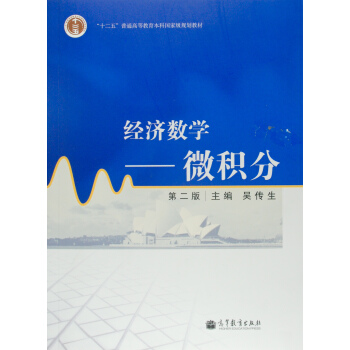

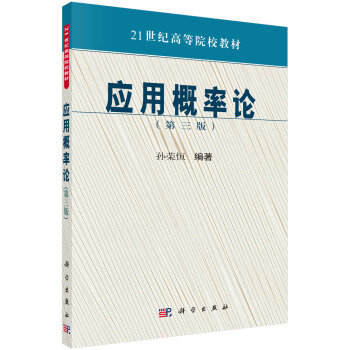

![经典英文物理教材系列:宇宙学的物理基础 [Physical Foundations of COSMOLOGY] pdf epub mobi 电子书 下载](https://pic.windowsfront.com/10096503/d120df60-0ce4-449c-8c3c-98573d0e0c1a.jpg)




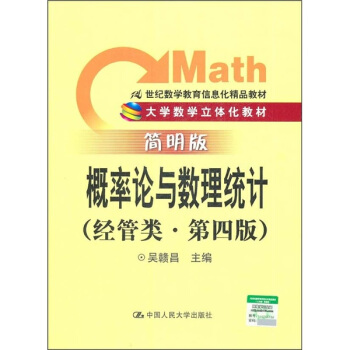
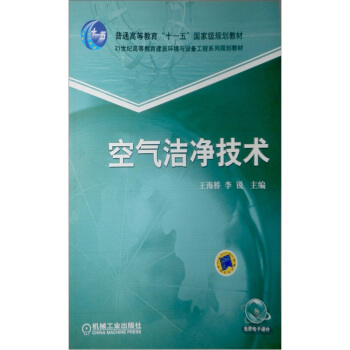
![粒子物理概念(第3版) [The Ideas of Particle Physics:An Introduction for Scientists Third edition] pdf epub mobi 电子书 下载](https://pic.windowsfront.com/10914282/4cd9d24a-6c7b-4c93-806f-e006d43d5fca.jpg)
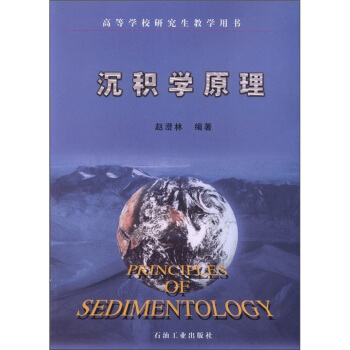




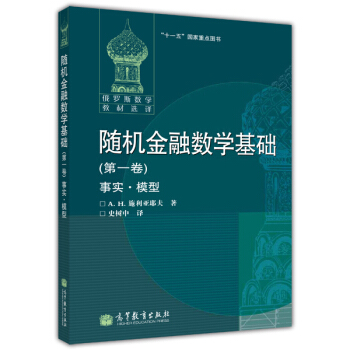
![生物化学与分子生物学 [Biochemistry and Molecular Biology] pdf epub mobi 电子书 下载](https://pic.windowsfront.com/11426306/5398fdf2N048684a9.jpg)
